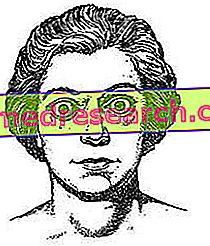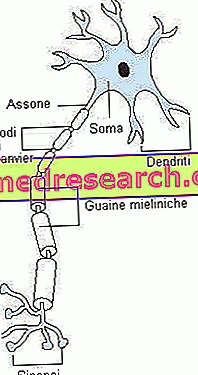Generality
Basedow's disease is the most common cause of hyperthyroidism worldwide, with an average incidence that - although subject to wide geographical variations - is between 1.5 and 3% of the population.
Also known as Graves' disease or widespread toxic goiter (due to the uniform increase in thyroid volume, with no nodular formations), Basedow's disease especially prefers women, with a male / female ratio of 1: 5-10.

Symptoms
To learn more: Basedow's Symptoms Disease
The onset of the disease can be accompanied by rather blurred symptoms, with difficulty in recognizing its nature in the immediacy. The first to appear are above all psychic disorders, which are maintained even in the overt phase of Basedow's disease; the patient can thus complain of anxiety, difficulty in falling asleep, excessive emotionality, irritability, restlessness, easy concern for irrelevant or totally absent reasons, depression, conception problems, tremors and easy mental fatigue.
In the full-blown picture, Basedow's disease is accompanied by other typical symptoms of thyrotoxicosis: tachycardia, arrhythmias (up to atrial fibrillation), weakness, heat intolerance with copious sweating, episodes of reddening of the face and neck, menstrual disorders up to amenorrhea, decreased libido and fertility, disorders of the hump with frequent diarrheal episodes, increased volume of the thyroid gland (goiter), shortness of breath, onycholysis (fragility of the nails with tendency to fissure), tremors in the hands with rapid, fine and irregular oscillations, and weight loss despite hyperphagia, which can in some cases lead to weight gain (Basedow fat).
Typical of Graves' disease is also the so-called exophthalmos, a condition in which the eyes protrude outside, becoming protruding and fixed until giving the face - in an advanced stage and in the absence of treatment - a "spirited" appearance. The early ocular symptoms, which precede actual exophthalmos, are limited to increased tearing, with photophobia, corneal and / or conjunctival irritation, and a feeling of sand in the eyes.

The neck of the patient with Basedow's disease may show swelling in the anterior region due to goiter (uniform but not always present increase in the thyroid gland).
Many of these symptoms can remain blurred in the elderly patient, except for those who are asthenic, cardiovascular and myopathic, who tend to accentuate instead. Furthermore, the history of the disease is not generally uniform, but is characterized by the alternation of remissions and recurrences, sometimes particularly intense (thyrotoxic crisis or storm).
Causes
While remaining unknown in many respects, the origin of Basedow's disease is substantially on an autoimmune basis and is influenced by an important genetic and hereditary component. In patients' serum it is in fact possible to find abnormal antibodies directed mainly against the TSH receptor (pituitary hormone that stimulates the synthesis of thyroid hormones); the chronic binding of these antibodies to the TSH receptor follows the stimulatory effects of the hormone on glandular activity. A thyrotoxicosis results from functional overactivation of the thyroid, with increase in circulation of both thyroid hormones (FT4 and FT3) and blockade of TSH (almost always indosposable given the known negative feedback effect exerted by thyroid hormones). The reason for this antibody attack still remains rather obscure.
Diagnosis
In order to diagnose Basedow's disease, in addition to the clinical examination of the patient (search for the symptoms and risk factors listed above), the dosage of thyroid hormones, TSH and antithyroid antibodies, associated with ultrasound images of the thyroid with echocolordoppler is essential. (to investigate its vascularization). Unlike in the past the scintigraphic examination is not normally required.
Treatment
See also: Drugs for the treatment of Graves' Disease - Basedow
Basedow's disease therapy aims to reduce the amount of circulating thyroid hormones and to this end uses thyrostatic drugs, the thionamides, with an immunosuppressive action. These medicines are represented by methimazole, propylthiouracil (preferred in pregnancy) and, secondly, by lithium carbonate and propranolol.
The drug therapy of Basedow's disease must be continued at gradually decreasing doses and - with a dose calibrated on the individual patient based on the aggressiveness of the disease - continued until the clinical hormonal remission of the hyperthyroid syndrome (6-24 months). When the pharmacological treatment does not produce the desired results or must be interrupted due to too many side effects (excessive reduction of the blood count of white blood cells, with alarm symptoms such as sore throat and fever), the doctor may decide to surgically remove good part of the thyroid gland or treat it with radioactive iodine (in both cases there is a risk of chronic hypothyroidism and relapses). The treatment of Basedow's Disease ophthalmopathy deserves a separate discussion, which uses eye lubricants, local or systemic corticosteroids, orbital radiotherapy, up to different types of corrective surgery.



